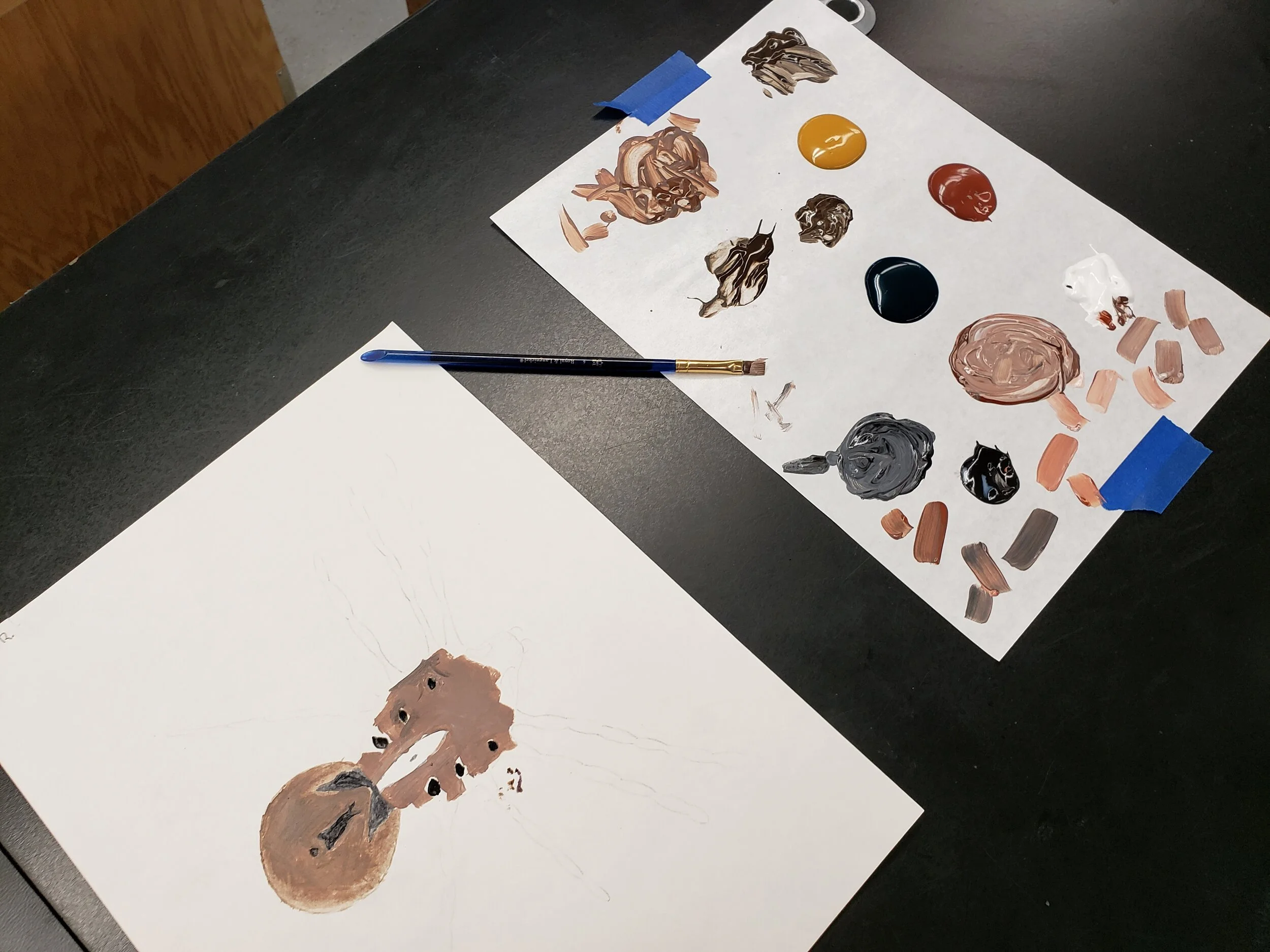Insects + Arachnids Unit
The Insects and Arachnids Unit explores the habitat and anatomy of bugs through careful observation and research. Students integrate scientific illustration and informative writing as they create bug sculptures and research-based text. Students consider issues of sustainability as they create their work of art using found objects and recycled materials.
This unit is inspired by the work of students, educators, museum educators, and teaching artists in the Stories of the Land and Its People program.
Insect and Arachnid sculptures by 7th grade students in the Stories Program (2019)
Vocabulary:
Shape
Color
Size + Scale
Composition
Texture
Scientific Illustration
Sculpture
Contrast
Curricular Connections:
Scientific Illustration / Anatomy
Insects + Arachnids
Environment / Conservation
Quantitative / Qualitative Research
Descriptive Writing / Informative Writing
Sensory Writing / Poetry
Measurements + Scale
Eliot Porter, Hawkweed in Meadow, Great Spruce Head Island, Maine 1968 from “In Wildness” Portfolio, 2017.18.3
Activity:
Notice: Notice works of art in the Farnsworth collection. What do you notice about color and composition? How does the artist achieve texture and detail?
Create: Focus in on a particular area within the composition of a painting or photograph to sketch. Try to illustrate every detail. For example, illustrate every blade of grass and flower you see in a section of this photograph by Eliot Porter.
Reflect + Share: Share your sketch with a classmate. Can other students identify the precise section of the artwork you focused your attention on? Give and receive feedback on your drawings. How can you improve? What was successful?
Activity:
Create: Create a color wheel! Review primary and secondary colors. Keep your wheel as an important reference throughout the project.
Reflect + Create: Consider how color can help create dimension. Draw a circle and practice creating dimension with highlighting and shading techniques. How can you make a “flat” object appear “round”?
Create: Continue to explore with color as you begin to illustrate more advanced objects!
Activity:
Create: Create your own scientific illustration journal. Use watercolor paper so that you may paint directly onto your journal as you learn. Card stock or a thicker weight paper for the cover will help provide a hard surface for documenting your work in the field.
Expedition: Go for a nature walk and document what bugs you find. You may wish to bring a magnifying glass with you!
Students in the Stories Program visit an insect and arachnid collector during an expeditionary field trip.
Interactive Film:
Create a sketch book with teaching artist Tara Morin!
Activity:
Notice + Connect: Study the anatomy or the parts of an insect and/or arachnid. Notice a specimen or a photograph of a specimen as source material for your scientific illustration and research.
Connect: After studying a similar specimen together, encourage your students to “adopt an insect/arachnid” of their choice to learn about. What are common features? What differs? For example, consider size and scale. What is their behavior?
Create: Scientifically illustrate and identify local insects/arachnids. Add details and research their scientific name and habitat.
Create: Using recycled materials, create a 3-dimensional sculpture of your insect/arachnid.
Stories students interact with insects and arachnids during an expeditionary field trip.
Reflect on your expedition into the field as you illustrate. What details and sensory language can you include in your scientific illustrations?
Activity:
Reflect: Consider the symbiotic relationships of insects and arachnids to plants in their natural habitats. How does your insect/arachnid impact plants? Does your bug play a role in pollination?
Pollinators are essential to our environment. Consider the symbiotic relationships of your insects to local habitats.
Explore the Symbiosis Unit and the Harvest Unit to make more connections to bugs, particularly pollinators!
Gallery of Student Work:









































Activity:
Create a coloring book with your scientific illustrations! Trace your lines and transfer them to a fresh sheet of paper to scan and make copies for others.
Stories students create an insect and arachnids coloring book! Click on the button to download.
Share a photo of your art projects by emailing edassistant@farnsworthmuseum.org.
Stories of the Land and Its People
The Stories of the Land and Its People program encourages student participants to learn about people and places in their community. For more student project examples, visit our Student Exhibitions page.
Developed by:
Andrea Curtis, Museum Educator
Farnsworth Art Museum
Colin Amundsen, Classroom Educator
Farnsworth Stories Program
Karen Talbot, Teaching Artist
Farnsworth Art Museum
Contributor(s):
Jackie Cooper, Art Educator
Farnsworth Stories Program
Claire Horne, Education Project Assistant
Farnsworth Art Museum
Developed by Andrea L. Curtis, Farnsworth Art Museum, Arts in Education Program, 2021



















